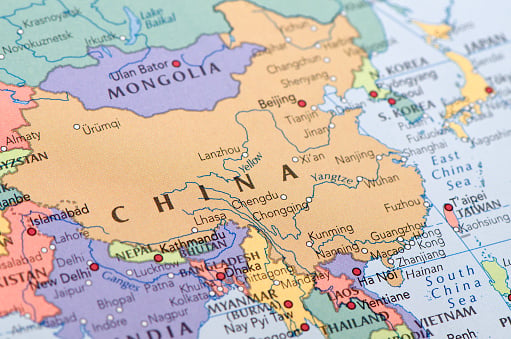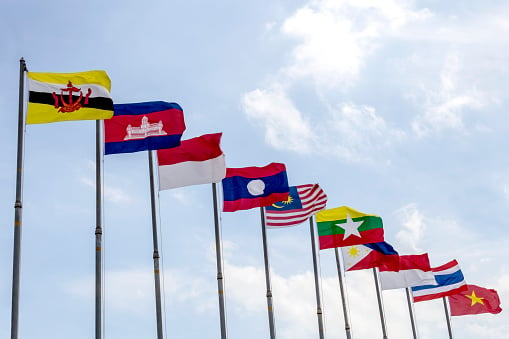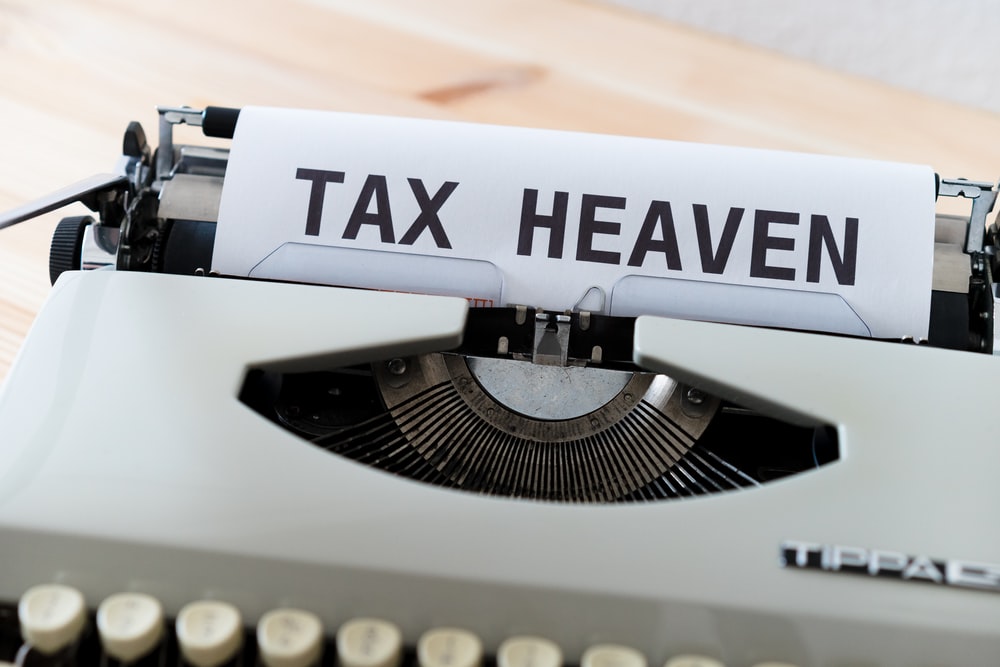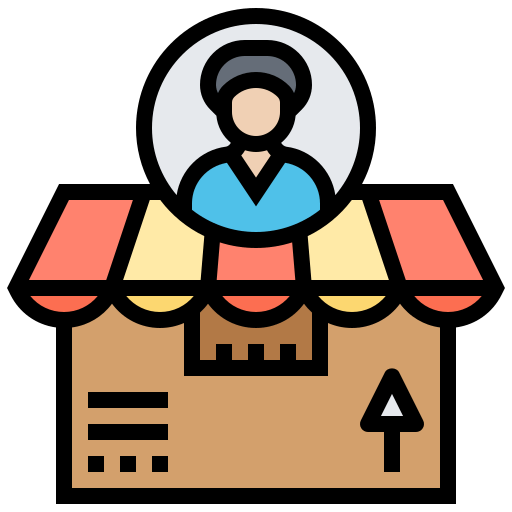It is essential to know import charges, custom duty, and clearance paperwork when importing goods from China.
Many importers around the world consider Chinese products as an excellent alternative for many items that may be marketed online or locally and generate substantial profits.
Import tax China varies depending on the items and imported goods, making the whole international commerce procedure seem confusing to novice importers.
This article will explain the import duty on Chinese products and duties.
Let’s take a comprehensive look and understand the process of China import tax.

Customs Duties : Types and Covid-19 Effects

When you import or export something from outside the country, you have to pay import export taxes on those goods.
That amount is known as customs duty. The import and export duties of the imported and exported goods amount must be paid; otherwise, they are considered illegal.
Till now, the epidemic has had little effect on import export tax.
However, according to experts, custom duties can increase in the years to come.
There have been no significant changes to tariffs in nations such as Australia, the United States, Canada, Ireland, Switzerland and ASEAN countries.
Importers face a significant serious problem in skyrocketing freight costs in late 2020 and early 2021.
The freight costs have increased five times than before.
These duties are calculated based on the number of products.
When the companies importing products from China, they have to pay the following taxes:
● Value Added Tax (VAT)
China’s import VAT on imported goods has been reduced to either 9 per cent or 13 per cent, down from the previous 10 per cent or 16 per cent.
Only some agricultural and utility items are exempt from the 9 per cent tax, while the 13 per cent tax is levied to the VAT, such as manufactured goods.
Taxable services supplied in China by foreign businesses or individuals continue to be subject to a 6% VAT rate.
The import VAT may be computed using the formula below:
Import VAT = Composite Assessable Price × VAT Rate
= (Duty-Paid Price + Import Duty rate + Consumption Tax) × VAT Rate
= (Duty-Paid Price + Import Duty) / (1-Consumption Tax Rate) × VAT Rate
● Consumption Tax
Imported commodities that are subject to China’s consumption tax include things like cigarettes and alcohol, as well as high-end items like jewellery and cosmetics and luxury automobiles.
According to the product being imported into the nation, consumption tax rates vary.
The ad valorem approach, is on quantity basis, or the compound tax method can all be used to calculate consumption tax.
The following are the formulas for calculating consumption tax:
- Ad valorem basis
Consumption Tax Payable = Taxable Sales Amount × Tax Rate
- Quantity-based method
Consumption Tax Payable = Taxable Sales Quantity × Tax Amount per Unit
- Compound tax method
Consumption Tax Payable = Taxable Sales Amount × Tax Rate + Taxable Sales Quantity × Tax Amount per Unit
● Customs Duty
Duty rates on imports range from most-favoured-nation tariffs (MFN) to TRQ duty rates, rates of general duty and provisional tariffs on imports that may be enforced for a certain time.
There is just one sort of customs duty rate for exports.
Also possible are temporary export duty rates that are only applicable quickly.
Notice on Cost of Export and Import of PRC states that from January 1, 2021, 8,580 imported commodities and 102 exported items have been charged by chinese government (2021)
Customs & Taxes When Importing from China: US, UK, Australia, Canada, ASEAN,Ireland & Switzerland
1. United States:

All goods valued at $200 or more are subject to import charges.
As in the EU, food imports and agricultural interests are taxed at a higher rate than others.
The latest news on the escalating tariffs between the United States and China.
The tariffs on $200 billion worth of products imposed in September 2018 have raised from 10% to 25% in early May 2019.
As of September 1, the remaining $300 billion worth of products would be subject to an extra 10% levy.
Thus, additional duties have been imposed on almost all commodities imported from China.
1. New tariffs impact all corporations importing to the United States, even if the company is not based in the United States.
2. In 2020, the current tariff rate of 10% might be raised to 25%.
It is still impossible to move orders to suppliers in other Asian nations since there are no factories outside China for most product categories.
You have two options: You may either pass on the increased tariffs to your consumers, or you can refuse to purchase anything at all because of the higher taxes.
Additional taxes
A VAT has not yet been implemented in the United States. Tobacco and alcohol are subject to a “Federal excise tax” imposed on imports.
Imported consumer goods from China are exempt from federal excise taxes for the time being.
Customs value
To determine Chinese customs fees, such as merchandise processing fee and HMF, the value of importe
d items is taken into account. Included in this are:
- Cost of the product
- Cost of transportation (to the China Port of Loading)
- Cost of export authorization (China)
FOB (free on board) is the standard quotation format used by most Chinese manufacturers.
Suggested reading: Us tariff codes
Suggested reading: Import Tax From China To US
2. United Kingdom

Most imported goods from China are subject to import duty in the United Kingdom, consistent with the European Union.
VAT is imposed on imports. The customs value is usually estimated using the CIF (products + freight + insurance value) figure.
The EU’s tariffs and VAT laws may no longer apply.
The UK, for example, may choose to eliminate FTAs like the (ChAFTA) in the future.
Suggested reading: Import From China to UK
3. Australia

Australian importers pay far lower import duty than their competitors in the US and EU.
Australia’s economy is less dependent on manufacturing than most other wealthy nations.
China-Australia Free Trade Agreement
This agreement inked in 2015 steadily decreased tariffs on most Chinese imports to zero.
Imports from China to Australia are duty-free from January 2019. The GST still applies to Chinese imports
Imports over AU$1000 in value lies in import charge fees. The quantity is determined by three variables:
• Means of transport
• Import declaration type
• Customs Value (items worth between AU$1,000 and $10,000)
Each import declaration is subject to a cost.
Fortunately, the price is often between AU$40 and $50.
Customs value
Customs duties, GST, and IPC, are based on the items FOB value.
This includes:
- Product cost
- Transportation (to China’s Port of Loading)
- Clearance of export
Suggested reading: Import From China to Australia
4. Canada

As one of the largest English-speaking nations, Canada has a complicated tax system.
In addition to import duty, Canadian importers must keep track of three different types of sales taxes:
- Sales tax in the province
- Goods and Services Tax
- Harmonized tariff schedule
Customs Value
In Canada, the customs value is determined by the FOB price.
Consequently, transportation expenses are excluded from the customs valuation, which results in a cheaper import charge.
Nonetheless, Canadian importers must include the tooling cost, samples of products, product samples, and customs valuation service.
Suggested reading: Import from china to canada
5. ASEAN(The Association of Southeast Asian Nations )

China and the ASEAN Member States signed an agreement in 2002, establishing the legal framework for establishing the ASEAN-China Free Trade Area (ACFTA).
ACFTA is a collection of three arrangements that promote the free movement of products, services, and investments.
ASEAN-China Agreement on Trade in Goods
Tariff reductions and eliminations are provided for tariff lines classified as ‘regular track’ or’ sensitive track’.
- Agreement on Services Trade
The purpose of this agreement is to liberalise and significantly remove discriminatory measures in the trade of services between parties in different service sectors.
- Investment Contract
To encourage and facilitate investment flows within China and the region, this agreement includes provisions that guarantee investors get fair and equal treatment.
6. Ireland

The European Union includes Ireland.
Single market: The European Union EU member states have the same tax rates for goods from countries outside the EU.
For things imported from China, an importer has to pay customs once according to China’s customs regulations..
Products sold in the EU are exempt from import tariffs.
Thus, your consumers in Spain and Germany will not have to pay taxes to customs on goods that are landed in the EU region.
Customs Value
Import duties are based on the kind of goods you’re trying to import. Import duties on non-EU products (such as consumer electronics) may be as low as 0%.
Consumer electronics, for example. Customs valuation in the European Union is based on the imports
Customs officers aren’t relying on hunches or guesses.
On the Bill of Lading, a document produced by a broker, the reported value should be specified.
Make sure your supplier is declaring an accurate price for their products. If you don’t, you’ll be charged an erroneous amount.
Suggested reading: Import from china to ireland
7. Switzerland

Import taxable products into Switzerland must be subject to import duties, such as VAT, transit clearance, and other levies.
CIF (Cost, Insurance, Freight) value is used by Switzerland and EU nations to establish customs charges. Insurance, products, export clearance, shipping and import clearance charges are all included in the CIF value.
Customs charges in Switzerland depend on both the weight and the kind of products that are being imported.
This information is available for free online so that you may establish the applicable duty rate for your goods.
To get the tax amount, you need to know the date, the country of origin, the place of delivery, and any other relevant details.
For most countries, exports and imports are regulated under the harmonized tariff system (HS).
Each commodity is assigned an HS code that identifies it as a separate item. This code is used to establish the customs status of goods in a certain nation.
Suggested reading: Import from china to switzerland
Looking for a product to import from china?
Leeline Sourcing helps buyers source the right product with the best cost.
6 types of China Import duty

1. MFN duty rates
All goods imported to China are subject to MFN duty rates, including:
- Imports originating from WTO member countries that apply the MFN treatment clause;
- Imports originating from countries or territories that have concluded bilateral trade agreements containing provisions on MFN treatment with China;
- Imports originating from China.
MFN tariffs are the most often used import tax. They are substantially cheaper than the non-MFN general rates.
Medical diagnostic equipment, speakers, and printers are among the 176 information technology devices that will have their MFN duty rates further reduced beginning July 1, 2021.
2. Conventional duty rates
Conventional tariff rates apply to imported commodities from regions that are not signed into regional trade agreements with China.
China has negotiated FTAs with over 20 nations or areas. In these cases, the MFN duty rates are generally lower than the regular duty rates.
China has cut conventional tariff rates with New Zealand and other nations in the Asia-Pacific Trade Agreement.
Except for items covered by particular obligations, all products from Hong Kong and Macao will be zero-tariff.
3. Special preferential duty rates
Trade agreements with China provide the most favored nation duty on imports from regions having such arrangements.
Preferential tariff rates are often cheaper than MFN and standard duty rates. Tariff rate quota duty rates
Tariff rate quotas (TRQs) in China apply to eight different kinds of goods: wheat, maize, rice, sugar, wool, cotton, and fertilizer.
Tariff rate quota (TRQ) schemes apply a lower tariff rate to products imported within the quota and a higher tariff rate to items imported outside the quota.
For example, the TRQ rate for wheat goods imported within the quota is as low as 1, 6, 9, or 10% – much lower than the MFN duty rate of 65 per cent and the general duty rate of up to 130 per cent or 180 per cent.
4. Provisional duty rates
China modifies provisional tariff rates on imported items every year to increase imports and meet domestic demand.
A provisional duty rate exists for imported products subject to the MFN tariff; the temporary duty rates shall be applied.
Where quick rates apply to imports subject to conventional or special preferential duty provisions, the lesser of the two rates should be used.
For imports subject to the general tariff, provisional rates do not apply.
5. Duty paying value for imported goods
To determine how much import taxes and customs duty must be paid, the price or value of the import goods is taken into account. The duty-paying value is a term for this value (DPV).
The DPV is based on the actual price paid or owed by the domestic buyer to the foreign seller, with certain adjustments.
Costs related to shipping and insurance premiums are included in DPV, which covers the goods before they arrive in China.
Excluded from DPV are import duties and taxes collected by customs authorities.
6. Anti-Dumping Duties
China has subsidized particular sectors and indigenous producers. Essentially, this implies Chinese producers may offer things below market price.
The EU and the US dislike these methods and typically respond with Anti-Dumping Duty legislation.
Anti-dumping duties may target whole sectors or individual producers. Anti-dumping duties should be taken seriously since they frequently range from 40-60%.
Before placing an order, find out whether your goods or provider is subject to Anti-Dumping Duty.
What’s Customs Value?
Import taxes, levies, and other taxes are calculated using the Customs Value (CV).
This is usually stated on the Commercial Invoice. It is market dependent. A price FOB (Free on Board) in the USA is used. FOB is the unit cost.
A customs value is based on the CIF cost (cost of freight and insurance) inside the European Union (in addition to the unit price).
As a result, the shipping company must report the value depending on the destination, which means knowing (or being notified of) the relevant Customs valuation technique.
Tax fraud involves undervaluing the claimed value. It is also done on tiny packages and containers.
This practice is anticipated to cost the EU up to €80 million in missed import charges each year.
Suggested reading: Customs commercial invoice
FAQs

Are there any fees or taxes I have to pay when I replace or repair a device?
In most cases, you won’t have to pay import duties twice if you send imported goods to China for repair or replacement or if the supplier sends defective units back to your country.
Instead of this, you should notify your freight forwarder or customs broker before the shipment or hand in documentation after delivery.
In most cases, you can get a refund or sell taxable products even if they charge you twice.
Don’t forget to prove that the goods are replacements or repaired units before purchasing them.
Are there any import duties or other taxes to pay in China?
No, China does not tax foreign businesses or individuals.
In addition, the FOB (Free on Board) price must include all costs incurred in China.
However, if you purchase products from a Chinese supplier on Ex-Work terms (EXW), shipping costs and exporting costs are not included in the purchase price.
As a result, you’ll be responsible for transporting and exporting clearance documents from the supplier’s facility to the Port of Loading in China.
Even though this isn’t a tax, you can’t avoid it when purchasing from China.
EXW terms are generally preferred by smaller importers, but FOB terms are preferred by more prominent importers.
How can I save money on import duties and other taxes when doing business with China?
The most common way to reduce the import duty rates is to understate the customs value stated by the customs office, as the amount is calculated based on the declared customs value.
Naturally, this is against the law and can lead to lengthy prison sentences in more serious cases.
By utilising bilateral free trade agreements, countries can sometimes reduce their import duties and local taxes.
When is a product drop shipped from China, who is responsible for import duties and other taxes?
The importer is the company or individual designated as the recipient of the goods.
By definition, the importer is Customers receive their purchases directly at the wholesaler’s warehouse in China, rather than through a third-party shipper.
Because of this, the customer is deemed to be the Importer, and as such, may be subject to import tariff and pay duties such as VAT or GST.
Why does one supplier declare a lower value at customs declaration?
There are two main reasons.
In the first place, some manufacturers believe they’re doing their customers a favour.
Aside from not employing international taxation consultants, the majority of suppliers do not.
They have no idea what the customs valuation rules are in every country, not even in major markets like the United States and the European Union.
Calculating the customs value and informing your supplier or freight forwarder of this information is your responsibility.
Conclusion

After reading all of these facts and explanations, you may believe that importing is too intricate and convoluted.
But engaging the services of a broker or an agent will accelerate the shipment process.
These agencies are well-versed in the importation process and have decades of experience. You will be charged for their services.
China has enacted a series of policies aimed at lowering import-export taxes and levies in order to boost imports and native consumption.
These changes may have an impact on foreign companies who import and export dutiable products and services to and from China.








